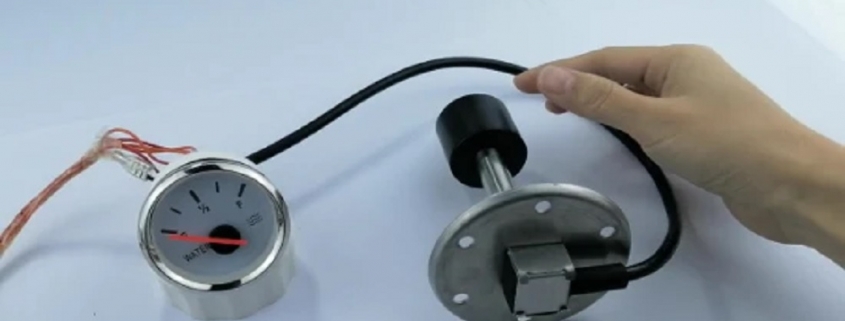The global fuel level sensor market is expected to grow at a CAGR of 4.57%
Knowledge Sourcing Intelligence announces the publication of a new analysis report on the market the “Global Fuel Level Sensor – which is forecasted from 2023 to 2028”.
The prime factor driving the Global Fuel Level Sensor Market growth is stringent in fuel efficiency and emission regulations.
The global fuel level sensor market is expected to grow at a CAGR of 4.57% from US$710.374 million in 2021 to US$971.263 million in 2028.
The market for fuel level sensors includes cutting-edge technologies that precisely detect the fuel levels in various machines and automobiles. These sensors allow for real-time monitoring, improved fuel economy, and preventative maintenance with applications in anything from industrial equipment to automobile and aircraft machinery. The market’s expansion is being driven by the demand for accurate fuel management, operational safety, and adherence to environmental standards as enterprises place a higher priority on resource optimisation.
The market’s influence on the development of contemporary machinery and transportation industries is highlighted by ongoing advancements in sensor technology and rising application cases. The trajectory of the worldwide fuel level sensor market is influenced by a number of important key variables. First, precise fuel level monitoring is essential for the best performance and safety when more advanced vehicle technologies, such as linked cars and driverless vehicles, are used. Second, in order to meet environmental requirements and lower carbon footprints, accurate fuel management is required because of strict fuel economy and emission rules applied internationally. Another important factor is the rising need for fleet management and monitoring systems. The need for gasoline level sensors in commercial vehicles has increased as businesses across sectors want to decrease costs, improve operational efficiency, and optimise fuel use.
The rise of the automobile and aerospace industries, which depend on effective fuel monitoring for safety and performance optimisation, is accelerated by their expansion. Additionally, as companies embrace technology that maximise fuel economy and minimise waste due to a growing awareness of environmental sustainability, fuel level monitors are becoming more and more integrated into vehicles. Accurate fuel level monitoring is required to ensure continuous operations and minimal downtime in vehicles and machines due to the demand for preventative maintenance and operational safety. Improvements in precision, efficiency, and reliability boost the adoption of sensor technologies as they advance, accelerating market development. Additionally, effective fuel management is needed for ongoing operations in the expanding industrial automation and equipment industry. Data from the International Organisation of Motor Vehicle Manufacturers (OICA) reveal that the manufacturing rate of automobiles grew by 10% from 77,650,152 units in 2020 to 85,016,728 units in 2022. Additionally, according to the same source, worldwide auto sales grew from 78,774,320 units in 2020 to 82,684,788 units in 2021, reflecting a 5% increase in output. Lastly, the prevalence of hybrid and electric vehicles does not lessen the significance of fuel level monitors. The management of auxiliary systems and alternative fuels relies heavily on these sensors, demonstrating their flexibility to the evolving automobile industry. The market for gasoline level sensors worldwide is expanding and becoming more innovative as a result of all these growth drivers.
The global fuel level sensor market has been categorized based on type, fuel type, end-user, and geography. The market has been segmented based on type into ultrasonic sensors, capacitive sensors, resistive sensors, and others. Fuel type is further classified into petrol, and diesel.
By region, When it comes to the global market for fuel level sensors, North America is the industry leader. The region’s significance is a result of its robust aerospace and automotive sectors as well as the rising use of cutting-edge sensor technology. The demand for precise fuel level monitoring is driven by stringent pollution standards and the focus on fuel efficiency. The incorporation of fuel level sensors into automobiles and industrial machinery is also being driven by an increased awareness of environmental sustainability. The technical breakthroughs, regulatory frameworks, and industrial variety of North America place it as a significant influencer in determining the innovation and growth trajectory of the global fuel level sensor market.
As a part of the report, the key companies operating in the global fuel level sensor market that have been covered are Technoton, PV Clean Mobility Technologies, Rochester Sensor, KUS Technology Corporation, Nippon Seiki Co. Ltd, Mielta Technologies, Omnicomm, SSI Technologies Inc.
View a sample of the report or purchase the complete study at: https://www.knowledge-sourcing.com/report/global-fuel-level-sensor-market
This analytics report segments the global fuel level sensor market on the following basis:
- By Type
- Ultrasonic Sensors
- Capacitive Sensors
- Resistive Sensors
- Others
- By Fuel Type
- Petrol
- Diesel
- By End-User
- Automotive
- Aerospace & Defense
- Marine
- Mining
- Others
- By Geography
- North America
- USA
- Canada
- Mexico
- South America
- Brazil
- Argentina
- Others
- Europe
- Germany
- UK
- France
- Spain
- Others
- Middle East and Africa
- Saudi Arabia
- UAE
- Others
- Asia Pacific
- China
- Japan
- South Korea
- India
- Australia
- Others
- North America



